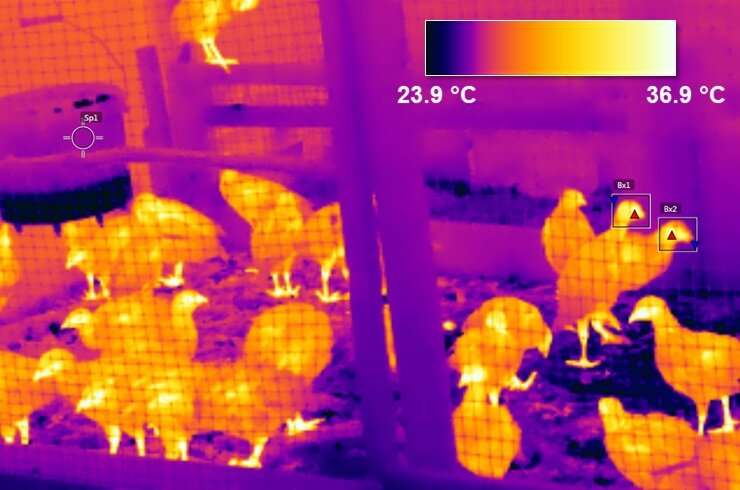Pheasants lose their cool after fighting

Pheasants' heads cool rapidly as they prepare to fight—then heat up afterwards, new research shows.
Scientists from the University of Exeter used thermal cameras to watch juvenile pheasants, to see how their temperature changed during aggressive interactions that establish the pecking order.
They found that pheasants—both the instigator and the recipient of the aggression—grew more cool-headed before a fight, due to a stress response in which blood rushes to the body's core.
Their heads became hotter again after the confrontation, as normal blood flow was restored.
"We were surprised that both individuals in these aggressive encounters followed a similar pattern of cooling and heating," said Dr. Tim Fawcett, of the University of Exeter.
"We expected that a fight would be more stressful for the pheasant on the receiving end of the aggression, and therefore that we'd see a stronger response in them.
"We can't say for certain what causes this pattern, but it could be that maintaining a place at the top of the pecking order is just as stressful as being at the bottom."
While male and female pheasants followed a similar pattern of cooling and heating before and after a fight, females were cooler on average.
"Thermal cameras provide a unique opportunity to non-invasively measure dynamic changes in physiological state over a short period of time," said Dr. Mark Whiteside, from the University of Plymouth.
"Using this technique we were able to measure responses to aggressive interactions, in semi-natural environments, in real time."
Changes in blood flow are an important part of the stress response in multiple animal species, in a variety of different situations.
The pheasants in the study were six or seven weeks old. They were captive at the time, but were later released into the wild.
The paper comes 100 years after Norwegian zoologist Thorleif Schjelderup-Ebbe coined the term "pecking order" in his Ph.D. thesis about chickens.
Published in the journal Philosophical Transactions of the Royal Society B, the new study—by a team including the University of Plymouth—was funded by the European Research Council and the Association for the Study of Animal Behaviour.
The paper is entitled: "Hot-headed peckers: thermographic changes during aggression among juvenile pheasants (Phasianus colchicus)."
More information: Hot-headed peckers: thermographic changes during aggression among juvenile pheasants (Phasianus colchicus), Philosophical Transactions of the Royal Society B (2022). doi.org/10.1098/rstb.2020.0442
Journal information: Philosophical Transactions of the Royal Society B
Provided by University of Exeter


















